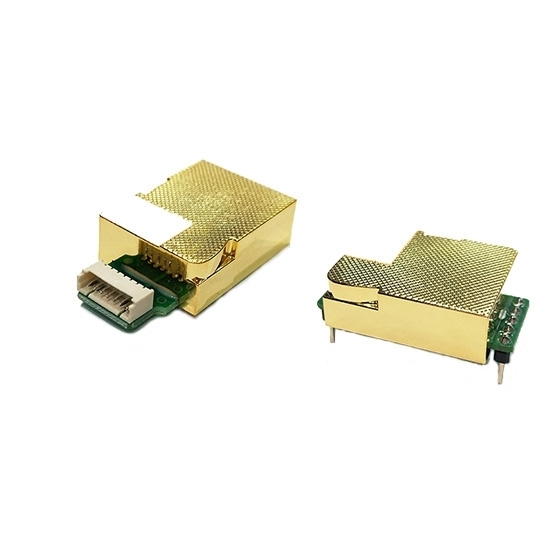How to Calibrate the Carbon Dioxide Sensor?
Carbon dioxide sensor can effectively measure indoor carbon dioxide concentration, and NDIR CO2 sensor is often used for carbon dioxide monitoring in factories, workshops, greenhouses, clean rooms and other industries and agriculture, as well as ventilation control and environmental quality in homes, villas, office buildings, conference rooms, classrooms and other fields. The scope of application includes monitoring of CO2 concentration in the production of industrial, agricultural and residential environments and the use of carbon dioxide gas units.
Any instrument needs to be calibrated before use and during routine maintenance, and CO2 sensors are no exception. The following is the calibration method of the collated CO2 gas sensor.

Why Calibrate CO2 Sensors?
All carbon dioxide sensors require calibration. Depending on the application, this can be accomplished by calibrating the sensor to a known gas or using the Automatic Baseline Calibration (ABC) method. Both have pros and cons that you should be aware of. Most of our CO2 products use non-dispersive infrared (NDIR) carbon dioxide sensors. They rely on an infrared light source and detector to measure the amount of CO2 molecules in the sample gas between them. Over the years, both the light source and detector degrade, resulting in slightly lower CO2 molecule counts. The industry calls it "drift". To prevent sensor drift, during calibration, the sensor is exposed to a known gas source, multiple readings are taken, the average is calculated, and the difference between the new reading and the original reading when the sensor was originally factory calibrated is stored in EPROM memory. This "offset" value is then automatically added to or subtracted from any subsequent readings taken by the sensor during use.
Three Calibration Methods
- Calibration with nitrogen
The most accurate way to calibrate a CO2 sensor is to expose it to a known gas (usually 100% nitrogen) to replicate the conditions under which the sensor was originally calibrated at the factory. ISO certification is available for our high-end sensors to validate this process for medical, research or scientific purposes. Nitrogen calibration is also required if you want to measure CO2 levels between 0-400 ppm. The problem with calibrating sensors with nitrogen is the expense. A sealed calibration enclosure, a pure nitrogen tank, and calibration software are required to match the original factory test environment. Otherwise, the accuracy of the calibration cannot be guaranteed. - Calibrate with fresh air
Infrared CO2 sensors can be calibrated in fresh air where maximum accuracy is not as important as cost. Instead of calibrating at 0 ppm CO2 (nitrogen), the sensor is calibrated at 400 ppm CO2 (outdoor air is actually between 350 ppm and 480 ppm in normal geographic locations), then from the newly calculated offset Subtract 400 ppm. Fresh air calibration is best for sensors in manufacturing environments or greenhouses where sensors are often exposed to varying levels of carbon dioxide. - ABC Calibration
The theory behind the ABC calibration is that for IAQ use, when the room is unoccupied at a certain time of day, the carbon dioxide level should return to 400 ppm, the same as outdoor air. By storing the lowest CO2 readings taken over a period of time (usually several days) in EPROM memory, a 400 ppm offset can be calculated and then added or subtracted from the actual CO2 reading.
The advantage of Automatic Baseline Calibration (ABC) is that the infrared carbon dioxide sensor calibrates itself over the life of the sensor, and the sensor is able to gradually correct to compensate for changes. This means that, for the end user, you have a reliable and efficient method and can also compensate for sensor drift in IAQ applications. However, one downside to the ABC algorithm is that while it may be beneficial to the indoor air quality environment, the ATO does not recommend this method for safety applications, only a zero calibration.
Zero calibration is based on the idea that if you show the sensor/device the 100% concentration of the surrogate gas instead of the measured value, the sensor/device should read absolute zero. By following this calibration method, the user is flooding the sensing chamber with a replacement gas and driving out any traces of the original gas. Another environment where ABC is also generally not recommended is modified atmosphere packaging or "MAP". This has a potential negative impact on the overall sensor calibration as the environment is constantly being absorbed by carbon dioxide.
How Often should Carbon Dioxide Sensors be Calibrated?
The more accurate the CO2 reading required, the more frequently the calibration will be performed. However, CO2Meter staff will generally advise customers to have their sensors or equipment calibrated as regularly as their vital equipment and equipment.
For specific industries, we recommend the following calibration cycles and methods:
- Science Experiments - Zero Calibration Before Every Test
- Safe - zero calibration at least once a year
- Beverages/restaurants - use zero nitrogen at least annually
- Greenhouse - zero nitrogen after each growth cycle
- Manufacturing - at least zero annual use of nitrogen
- Indoor Air Quality - ABC or Fresh Air Desired

